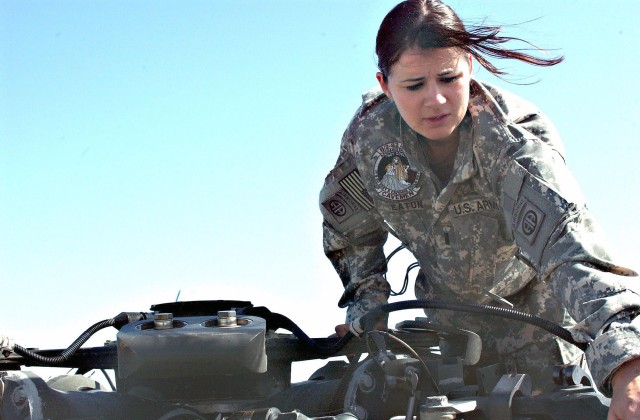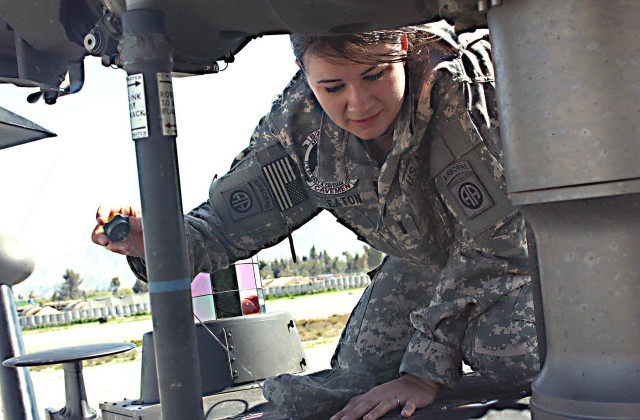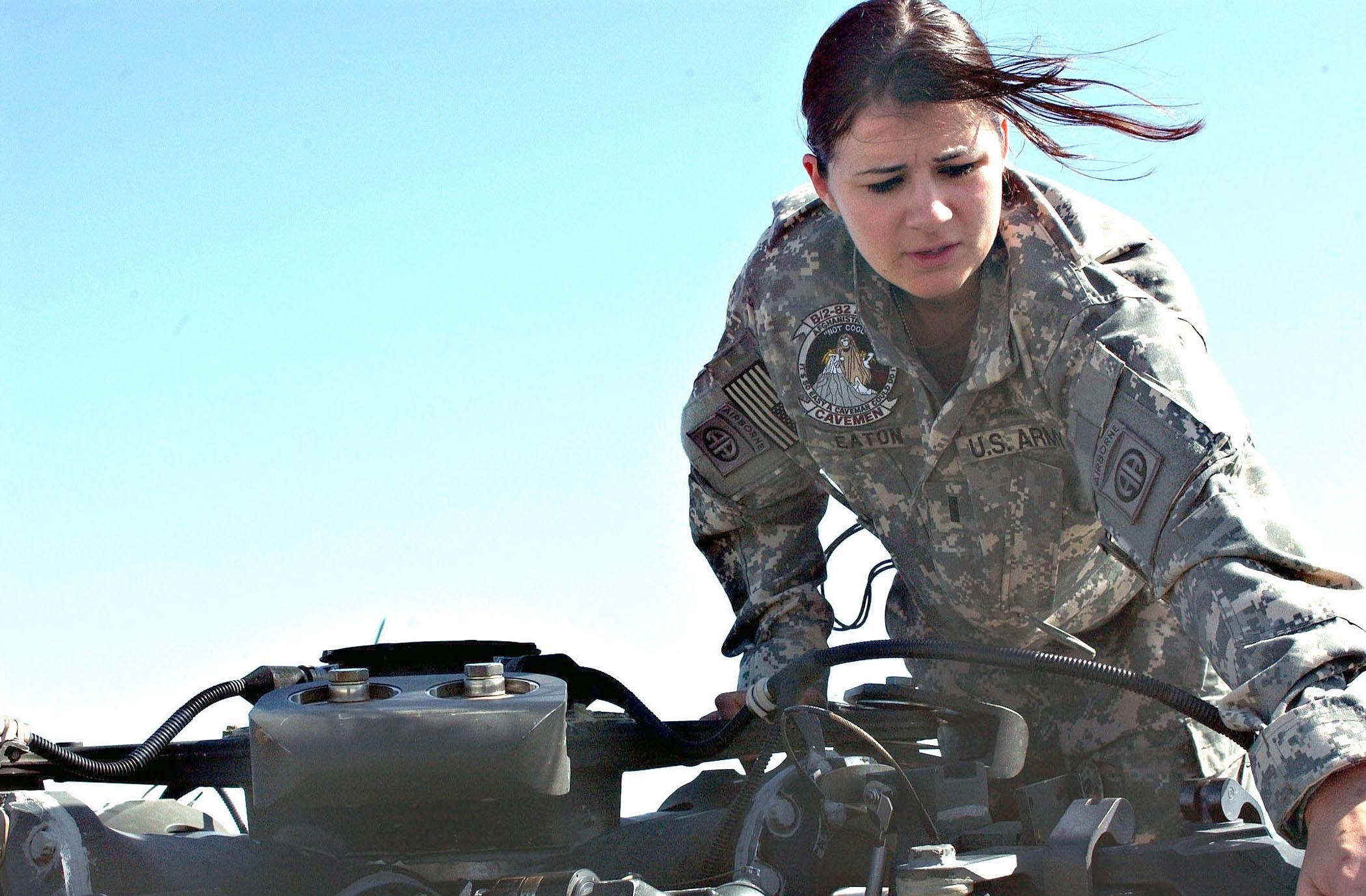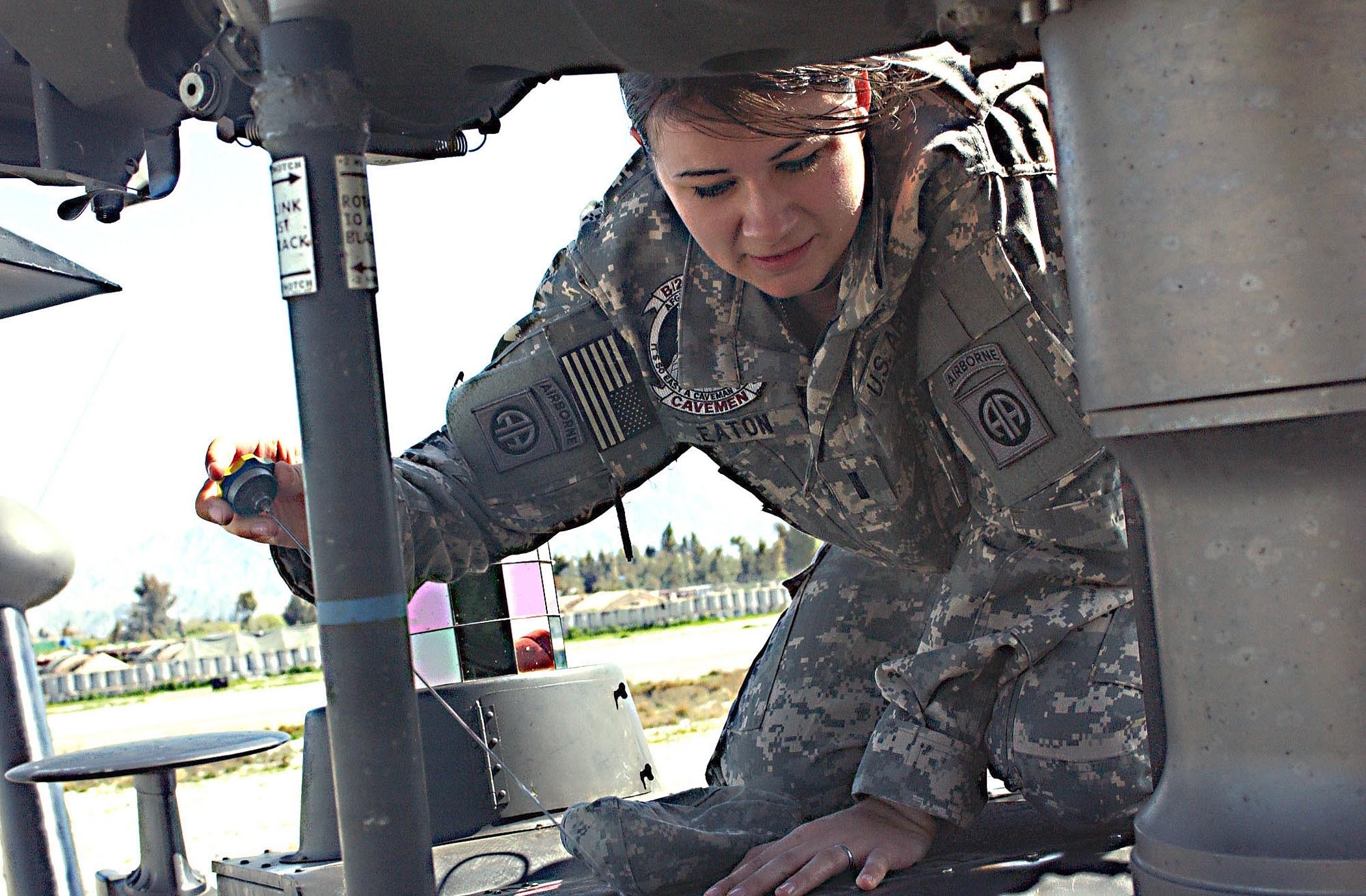JALALABAD AIRFIELD, Afghanistan - "Aviation is full of Type A personalities," said Army 1st Lt. Elizabeth Eaton, a helicopter pilot for 82nd Combat Aviation Brigade. "I used to not be a Type A. But I'm one now."
Working as a pilot takes a certain demeanor, energy and passion. The success of these pilots lies in their aggressive attitude, self-discipline and belief in themselves.
Eaton and her female counterparts have all learned to dive headfirst into their profession, carving a place for themselves among the ranks of aviation.
"I was a parachute rigger before I made the decision to become a warrant officer and go to flight school. I didn't feel like I was really working to my full potential," said Army Chief Warrant Officer 2 Nicole Frederick, a pilot with 82nd CAB. "I love flying because it's never mundane. It's always something new."
Both women felt the allure of aviation in different ways. Eaton was swayed by the influence of role models.
"My two older sisters are captains in the Army," said Eaton. "Every time they came home to visit they always had such exciting stories. Our junior year of the Reserve Officers' Training Corps we went to Fort Lewis (Wash.) to do some training.
"During this time we went to go visit with all these individuals from different areas of the Army," she continued. "When I saw the helicopters, I just fell in love. And standing there in front of a Black hawk was a female major. She just looked so tough. I was in awe. I was hooked at first glance."
Although Eaton had everything she needed in order to become a judge advocate general, after her encounter with the aviation world, she chose piloting as her career route.
The glamour of flying helicopters is a magnet for potential pilots, but the reality of flight school puts the dream into immediate check.
"When we would do morning flights we'd be up at 3:30 a.m., take the bus to the airfield, fly all morning, take 30 minutes for lunch, get back in the air, fly until early evening, do mandatory PT and then study hard until we got into bed," Frederick said. "Then we'd wake up and do it again. I've been to lots of Army schools, but aviation is a totally different beast."
Flight school is a one-year course. Students begin with class instruction and then move quickly into actual flying exercises. Students initially fly in a small training helicopter called a TH-67. After a mere 10 hours of accompanied flying, students make a solo flight.
"My first solo flight was the biggest challenge I had in flight school," said Eaton. "After only ten hours in the air you're told to choose a flight pattern and just go. You and a fellow classmate just take to the air and fly this big piece of metal into the sky."
"I'd have to say the biggest challenge I faced, aside from mustering up the courage to go to flight school, was Standard Auto Rotation," said Frederick.
Standard Auto Rotation is a crash exercise that helps teach flight school students what to do if their helicopter loses all power.
"You literally have to turn off all power and land the bird on the kinetic power left in the blades," said Frederick. "It's a rough landing, but it's good to know if you lose power. It's terrifying because you don't have any power so you are literally plummeting from the sky until right before you hit the ground and then you pull up the nose."
The challenges of flight school were only a part of the puzzle for the women of aviation. As Eaton said, "Type A" personalities are the norm in aviation.
"Most pilots are very self-assured," said Eaton. "They are proud to fly helicopters, and that shows in their attitude. I've learned to take on that same attitude and let it propel me to success."
Since female pilots are a minority, they face career progression challenges as well.
"There are so few females in our field that we have to really work hard to be noticed," said Frederick. "I dig the challenge. I know that I'm going to be a strong pilot because I have this challenge."
"There seems to be no gray area for females in our field," said Eaton. "You either excel and stand out or you don't. I choose to excel and stand out."
Pilots study constantly to ensure they keep their edge and retain all the knowledge essential to safe flying. Aviation pilots are tested annually on knowledge of their aircraft and flying procedures. Pilots need to remember 60 emergency procedures and about 40 "limitations." Each "EP" has several steps.
"Aviation is one of the most difficult jobs in the military," said Frederick. "We study regularly to make sure we are up to par on everything we need to remember to make sure we are providing safe air missions."
Despite the rigors and never ending challenges of flying, the women of aviation continue to move forward in their career field. Day after day in Afghanistan, females like Eaton and Frederick lend an example to women everywhere.
"When we do flight missions into these more obscure areas up north we see the local Afghan women covering themselves and cowering in fear," said Frederick. "They are afraid because their culture has taught them to be afraid and to cover themselves as a means of protecting themselves from the intentions of outsiders. If only they knew it was a woman just like them flying these huge aircraft."
Women in the Army continue to move forward in every way as their numbers in the armed services continue to grow. They have proven their worth in the toughest missions, including tactical aviation, for many years. Flying females can be found alongside their male counterparts, soaring through the air on behalf of freedom and humanity.




Social Sharing